Einleitung
In dieser Anleitung zeigen wir dir, wie du den eingeklebten Akku deines MacBook Pro mit einem iFixit Akku Kit entfernen kannst. Der Klebstoffentferner in deinem Kit wird den Kleber, der den Akku befestigt, auflösen, so dass du ihn ganz leicht herausnehmen kannst.
'Der iFixit Klebstoffentferner ist leicht entzündlich. Du solltest diese Reparatur in einem gut belüfteten Bereich durchführen und währenddessen nicht rauchen oder in die Nähe einer offenen Flamme kommen.
Um das Sicherheitsrisiko zu verkleinern, solltest du den Akku deines MacBook Pro vollständig entladen, bevor du mit der Reparatur beginnst. Ein geladener Lithium-Ionen-Akku kann ein gefährliches und unkontrollierbares Feuer verursachen, wenn er versehentlich beschädigt wird. Wenn dein Akku aufgebläht ist, dann musst du geeignete Vorsichtsmaßnahmen treffen.
Hinweis: Das Lösungsmittel im Klebstoffentferner kann bestimmte Plastikteile angreifen. Folge allen Anweisungen und achte darauf, wo du den Klebstoffentferner anwendest.
Werkzeuge
Ersatzteile
-
-
Schalte deinen Mac ein und starte Terminal.
-
Kopiere den folgenden Befehl und füge ihn im Terminal ein (oder tippe ihn exakt so ein):
-
sudo nvram AutoBoot=%00
-
Drücke die Eingabetaste [return]. Wenn du dazu aufgefordert wirst, gib dein Administratorpasswort ein und drücke erneut [return]. Hinweis: die Return-Taste kann auch mit ⏎ oder "enter" gekennzeichnet sein.
-
sudo nvram AutoBoot=%03
-
-
-
Mit einem Pentalobe P5 Schraubendreher kannst du die sechs Schrauben entfernen, mit denen das Gehäuseunterteil befestigt ist:
-
Zwei 6,2 mm Schrauben
-
Zwei 5,3 mm Schrauben
-
Zwei 3,4 mm Schrauben
-
-
-
Drücke einen Saugheber vorne mittig auf das Gehäuseunterteil des MacBook Pro.
-
Hebe den Saugheber an, damit zwischen dem Gehäuseunterteil und dem Rahmen ein kleiner Spalt entsteht.
-
-
-
Führe eine Ecke eines Plektrums in diesen Spalt ein.
-
Ziehe das Plektrum um die nächstgelegene Ecke und bis zur Hälfte der Seite des Gehäuses.
-
-
-
Wiederhole den vorigen Schritt auf der gegenüberliegenden Seite, indem du das Plektrum unter das Gehäuseunterteil steckst und entlang der Seite nach oben führst, bis der zweite Clip gelöst ist.
-
-
-
Stecke das Plektrum jetzt nochmal unter den vorderen Rand des Gehäuseunterteil, bei einem der beiden mittleren Schraubenlöcher.
-
Drehe das Plektrum kräftig, damit der dritte Clip gelöst wird, mit dem das Gehäuseunterteil am Rahmen befestigt ist.
-
Wiederhole diesen Vorgang bei dem anderen mittleren Schraubenloch und löse auch den vierten Clip.
-
-
-
Ziehe das Gehäuseunterteil kräftig nach vorne (weg von den Scharnieren), um dadurch den letzten Clip zu lösen, der das Gehäuseunterteil noch fixiert.
-
-
-
Ziehe vorsichtig das große Stück Klebeband ab, das den Akkustecker am Rand des Logic Boards ganz nah am Akku abdeckt.
-
Entferne das Klebeband
-
-
-
Ziehe vorsichtig das kleine Stück Klebeband ab, mit dem der Stecker des Datenkabels an der Akkuplatine abgedeckt ist.
-
-
-
Mit der Spitze eines Spudgers kannst du jetzt die kleine schwarze Verriegelung umklappen, mit der das Kabel im Anschluss gesichert ist.
-
-
-
Schiebe das Datenkabel der Akkuplatine, aus seinem Anschluss heraus und trenne es ab.
-
Schiebe es parallel zum Logic Board in Richtung des Kabels.
-
-
-
Biege das Datenkabel der Akkuplatine zurück, so dass es nicht mehr im Weg ist.
-
Wenn du den Akku austauschen willst, musst du wahrscheinlich dieses Kabel komplett entfernen und auf den neuen Akku übertragen. Trenne beide Kabelenden ab und entferne das Kabel behutsam. Achte beim Zusammenbau darauf, dass du das Kabel nicht mit der Unterseite nach oben oder rückwärts einbaust - beachte die Einbaurichtung in den Bildern.
-
-
-
Nimm einen T5 Torx-Schraubendreher und entferne die 3,7 mm Flachkopfschraube vom Stecker der Stromversorgung am Akku.
-
-
-
Hebe jetzt den Stecker am Akkuanschluss mit einem Spudger vorsichtig an und trenne dadurch den Akku ab.
-
Hebe den Stecker so hoch an, dass er auch wirklich vom Anschluss getrennt bleibt. Wenn es im Laufe der Reparatur versehentlich zu einem Kontakt kommt, könnte dein MacBook Pro dadurch beschädigt werden.
-
-
-
Mit einem T5 Torx Schraubendreher kannst du die beiden 2,1 mm Schrauben entfernen, mit der die Abdeckung des Trackpadkabelanschlusses befestigt ist.
-
-
-
Mit einem Spudger kannst du jetzt das Flachbandkabel des Trackpads trennen, indem du den Anschluss gerade nach oben aus dem Logic Board hebelst.
-
-
-
Bereite einen iOpener vor und lege ihn etwa eine Minute lang auf das Flachbandkabel des Trackpads, um den Kleber zwischen dem Kabel und der Akkuoberseite aufzuweichen.
-
Wenn du keinen iOpener hast, benutze einen Fön zum Aufwärmen des Kabels. Das Kabel sollte warm sein, aber nicht so heiß, dass man es nicht mehr anfassen kann. Achte darauf, den Akku nicht zu überhitzen.
-
-
-
Entferne jetzt die zehn Schrauben, mit denen die Trackpad Einheit befestigt ist mit einem T5 Torx Schraubendreher :
-
Zwei 4,3 mm Schrauben
-
Acht 5,8 mm Schrauben
-
-
-
Entferne die Trackpad Einheit.
-
Achte auf die sechs kleinen Unterlegscheiben (zwei runde und vier eckige), die sich auf der Unterseite des Trackpad befinden, sie sollten nicht verloren gehen.
-
-
-
Verwende einen T5 Torx Schraubendreher, um die beiden 3,1 mm Schrauben zu entfernen, mit denen das Akku Board befestigt ist.
-
-
-
Setze das flache Ende eines Spudgers unter dem Akku Board an der Seite an, die dem Logic Board am nächsten ist.
-
Hebe das Akku Board um etwa 45° an. Falls nötig kannst du den Akku-Netzstecker aus dem Weg halten, damit das Akku Board mehr Platz hat.
-
-
-
Lege eine Aluminiumfolie zwischen Display und Tastatur, um dein Display zu schützen. Die Folie sollte während des gesamten Arbeitsprozesses dort bleiben.
-
Zusätzlich solltest du noch ein saugfähiges Tuch direkt unter das Trackpad legen, um überschüssigen Klebertferner aufzusaugen.
-
-
-
Dein MacBook Pro ist jetzt gut vorbereitet, nun wird es Zeit, auch dich selbst vorzubereiten.
-
Wenn du mit dem Klebstoffentferner arbeitest und ihn aufbringst, solltest du immer deine Augen schützen. (Eine Schutzbrille ist in deinem Kit enthalten).
-
Insbesondere auch wenn du Kontaktlinsen trägst, musst du zusätzlich die Schutzbrille aufsetzen.
-
In deinem Kit sind auch Schutzhandschuhe enthalten. Wenn deine Haut empfindlich ist, solltest du die Handschuhe jetzt anziehen.
-
-
-
Entferne den schwarzen Gummistopfen von dem Behälter mit dem Klebstoffentferner.
-
Benutze eine Schere, um die versiegelte Spitze des Applikators abzuschneiden.
-
-
-
Trage ein paar Tropfen Klebstoffentferner unter die vordere Kante der Akkuzelle auf, die sich gleich neben dem Lüfter befindet.
-
-
-
Kippe die Vorderkante deines MacBook Pro leicht nach oben, so dass der flüssige Klebstoffentferner unter die Akkuzelle fließt.
-
Warte 2-3 Minuten, damit der Klebstoffentferner einwirken kann, bevor du mit dem nächsten Schritt fortfährst.
-
-
-
Nach 2-3 Minuten kannst du eine Plastikkarte unter den Rand der Akkuzelle schieben, unter der du den Klebstoffentferner eingebracht hast.
-
-
-
Arbeite dich vorsichtig mit der Karte weiter vor, um den Kleber, der die Akkuzelle befestigt, abzulösen.
-
-
-
Drehe die Karte, um die Akkuzelle abzuheben, bis sie sich vollständig vom Aluminiumgehäuse löst.
-
-
-
Wiederhole die vorherigen sechs Schritte, um auch die andere ganz außen gelegene Akkuzelle auf der gegenüberliegenden Seite herauszulösen.
-
-
-
Um die Akkuzelle in der Mitte herauszubekommen, hebe die Hinterkante des MacBook hoch und stütze sie auf einem Schaumstoffblock oder einem Buch ab, so dass der Klebstoffentferner vom Logic Board weg fließt.
-
Trage ein paar Tropfen Klebstoffentferner entlang der hinteren Kante der Akkuzelle auf.
-
-
-
Um das auszugleichen kannst du ein paar weitere Tropfen Klebstoffentferner entlang jeder Seite der mittleren Akkuzelle auftragen.
-
Warte 2-3 Minuten, bevor du mit dem nächsten Schritt fortfährst.
-
-
-
Schiebe eine Plastikkarte unter eine der seitlichen Kanten der mittleren Akkuzelle.
-
Es könnte hilfreich sein, die Karte etwas zu drehen, damit ein kleiner Spalt zwischen der Akkuzelle und und dem Gehäuse des MacBook Pro entsteht.
-
-
-
Hebe die Akkuzelle mit der Karte an, bis sie sich vollständig vom Aluminiumgehäuse abhebt.
-
-
-
Hebe den Akku an und entferne ihn.
-
Mit etwas Glück kannst du jeden einzelnen Klebestreifen langsam mit den Fingern abziehen.
-
Falls das nicht klappt, träufle etwas Klebstoffentferner auf jeden Klebestreifen und lasse ihn 2-3 Minuten einwirken. Dann kannst du die Klebestreifen mit einem Plektrum oder einem anderen geeigneten Werkzeug aus deinem Kit abkratzen. Das ist etwas langwierig, hier hilft nur Geduld!
-
Wische den restlichen Klebstoffentferner ab und lass dein MacBook Pro ein paar Minuten an der Luft trocknen.
-
Kalibriere deinen neu eingebauten Akku: Lade ihn auf 100% auf und lasse ihn noch zwei weitere Stunden laden. Benutze dein Gerät normal bis es sich wegen eines leeren Akkus abschaltet. Achte darauf deine Arbeit rechtzeitig abzuspeichern. Warte dann mindestens 5 Stunden und lade das Laptop dann ohne Unterbrechung auf 100% auf.
-
Vergleiche dein Ersatzteil mit dem Originalteil. Möglicherweise musst du fehlende Teile übertragen oder Schutzfolien vom Neuteil abziehen, bevor du es einbauen kannst.
Um dein Gerät wieder zusammenbauen, folge den Schritten in umgekehrter Reihenfolge.
Für eine optimale Leistung solltest du deinen neu eingebauten Akku kalibrieren: Lade ihn auf 100% auf und lasse das Ladegerät mindestens zwei weiter Stunden angeschlossen. Arbeite dann mit dem Gerät, bis es sich wegen eines leeren Akku von selbst abschaltet. Lade das gerät dann ohne Unterbrechung wieder auf 100% auf.
Bringe deinen Elektromüll zu einem zugelassenen Entsorger.
Hat die Reparatur nicht den gewünschten Erfolg gebracht? Auf unserem Antworten-Forum kannst du Hilfe bei der Fehlersuche finden.
28 Kommentare
Does the replacement battery comes with the same strong adhesive as the original battery?
Surgie -
I ordered my battery for the 2017 version of the Macbook Pro with function keys from ebay and it didn’t came with a adhesive strip. I am sure you can use your own adhesive strips or double sided tape, as long as you mind the gabs on the aluminum frame,
Serj Nko -
Thanks for the great guide! Can you copy the guide to the Macbook Pro 2017 thread, as it’s exactly the same procedure for the function key version? It might be obvious for some “Pros” but I realized it after some trial and error odyssey.
Serj Nko -
Hi Jeff,
Thank you for this great work to beat Apple greediness. I followed the exact steps and everything went well, but my battery is not charging nor the status is shown on the bar! I tried restarting and resetting and even restoring and it did not work would that be something you can help me with?
If the old battery still works, try putting it back in, and see if that clears up the problem. If it does, the new battery is defective.
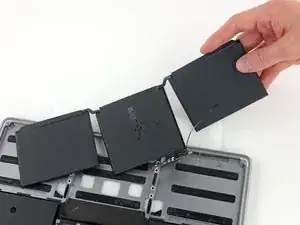
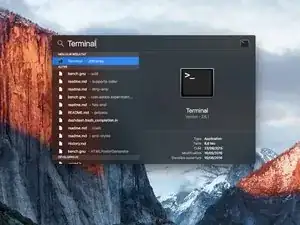
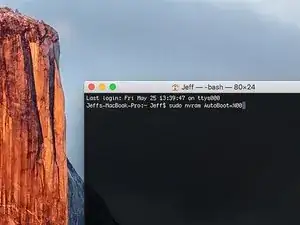

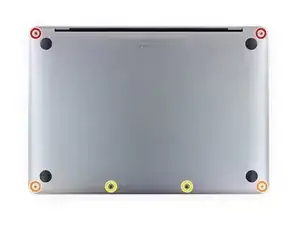
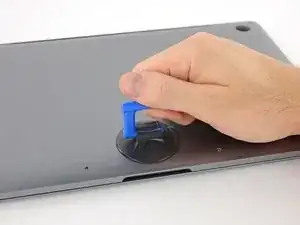
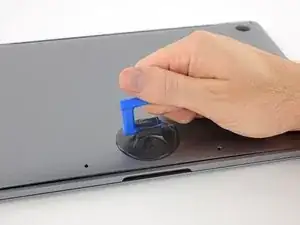
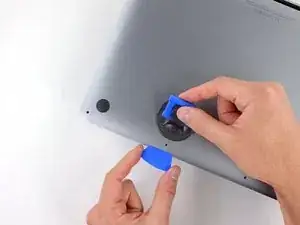
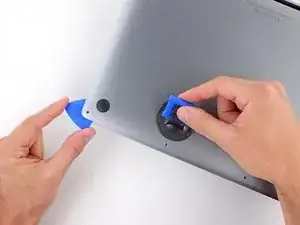
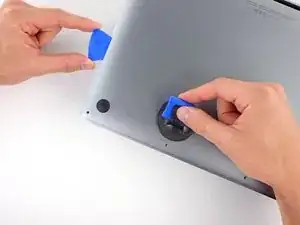
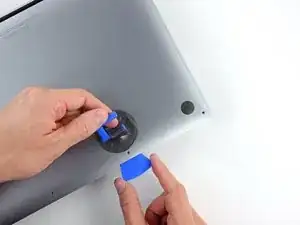
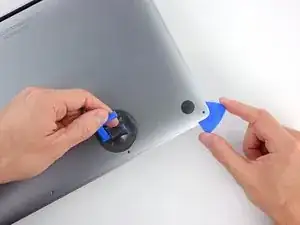
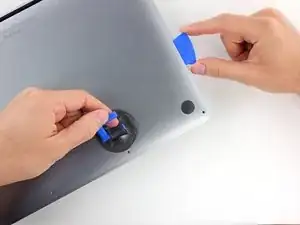
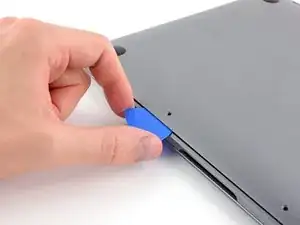
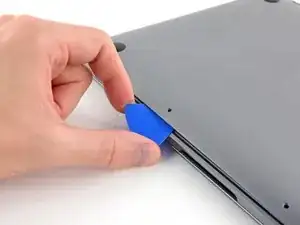
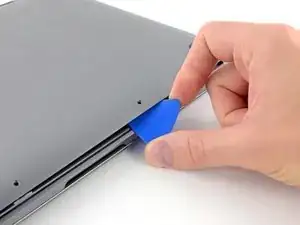
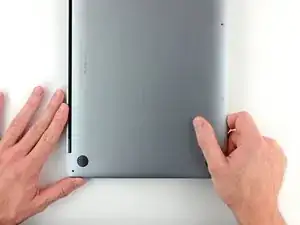
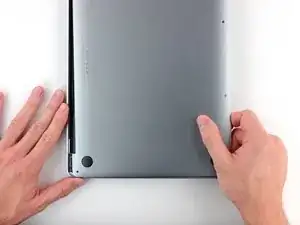
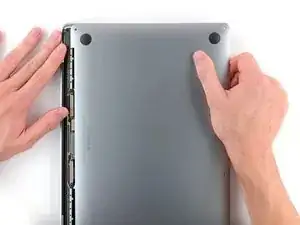
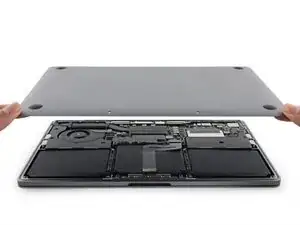
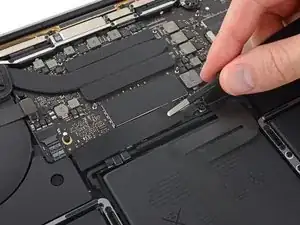
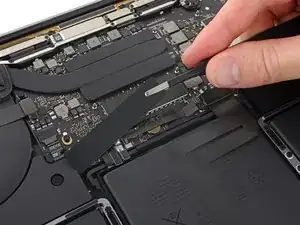
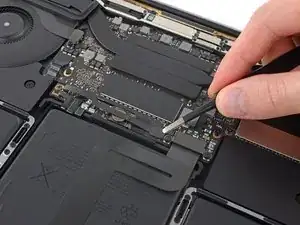
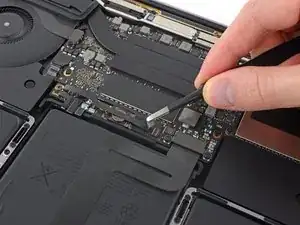
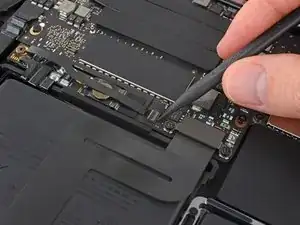
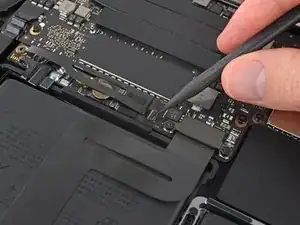
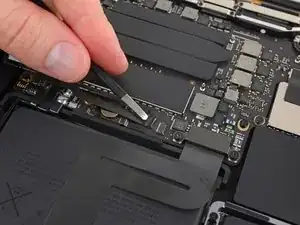
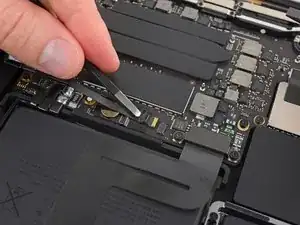
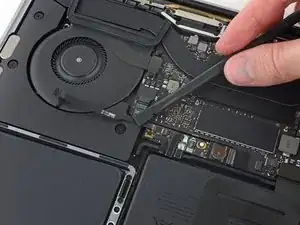
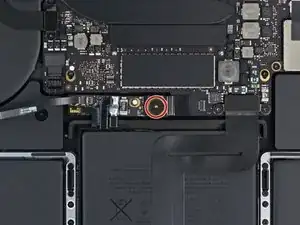
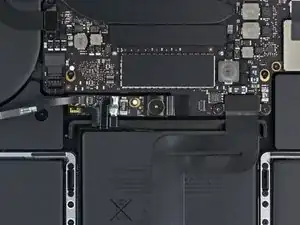
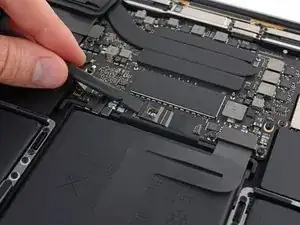
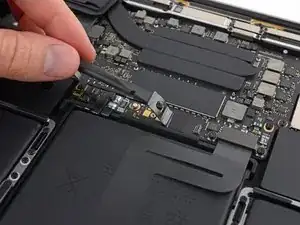
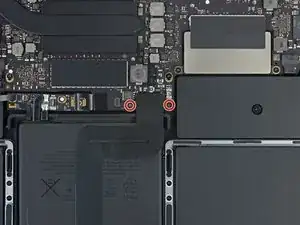
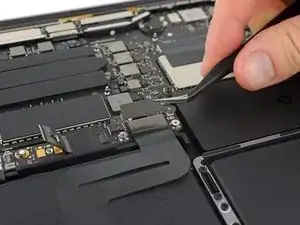
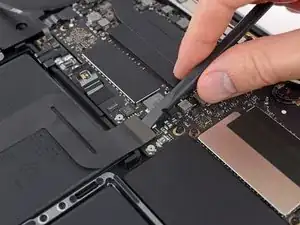
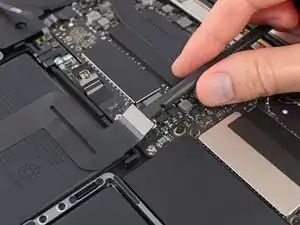
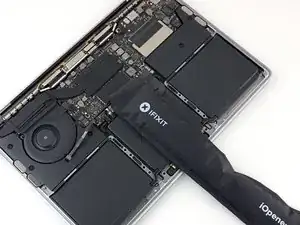
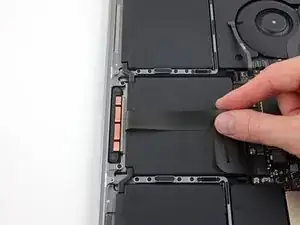
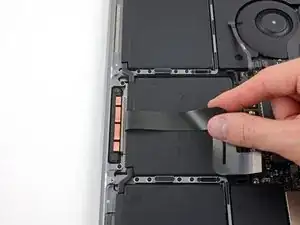
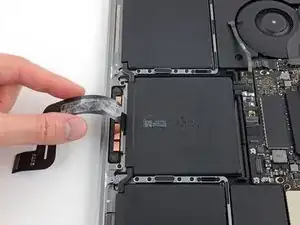
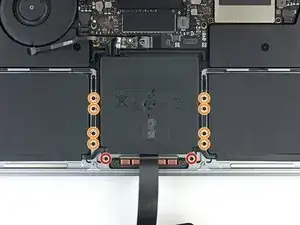
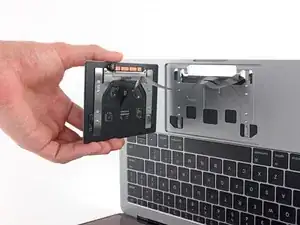
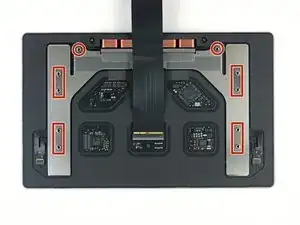
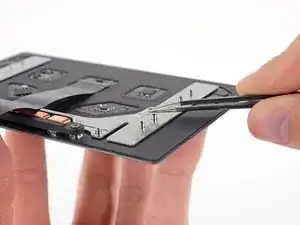
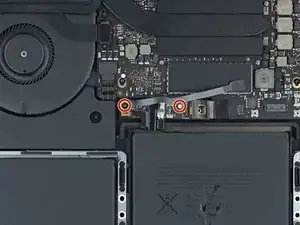
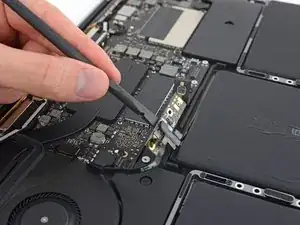
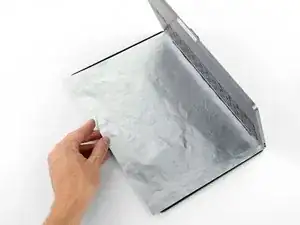
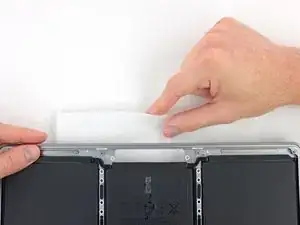


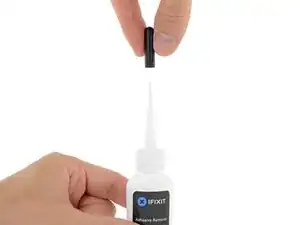
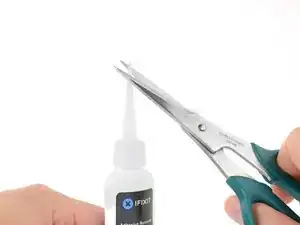
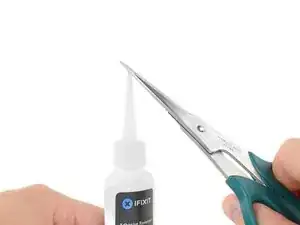
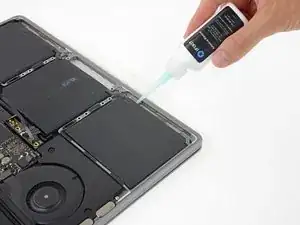
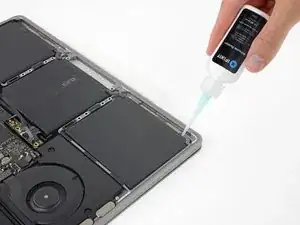
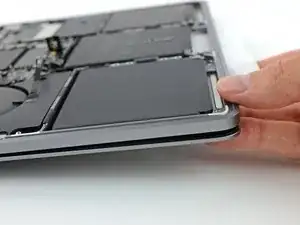
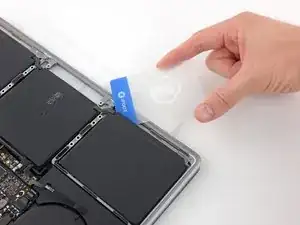
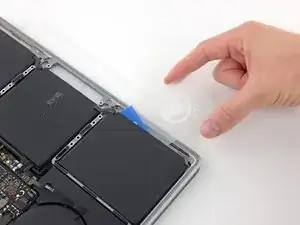
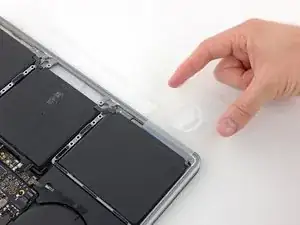
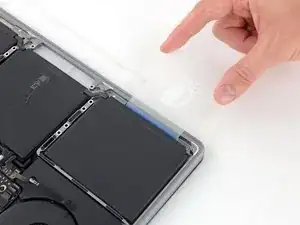
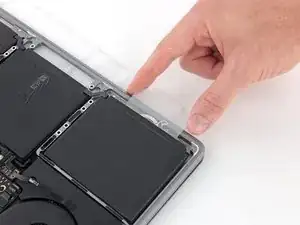
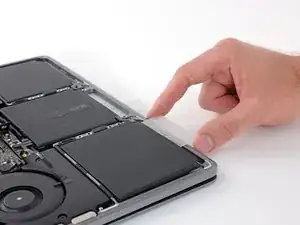
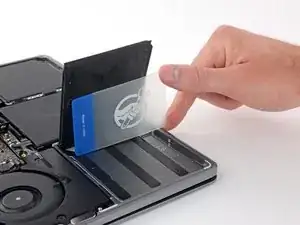
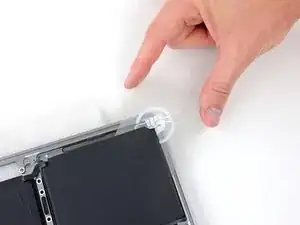
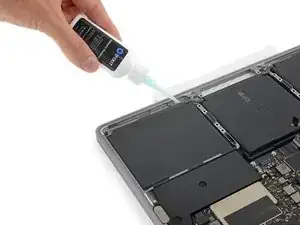
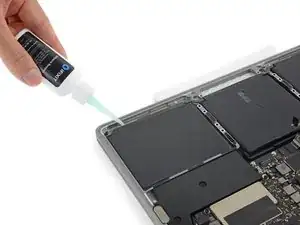
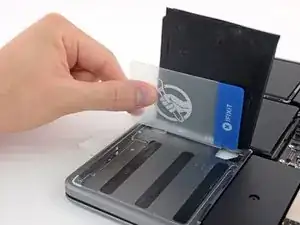
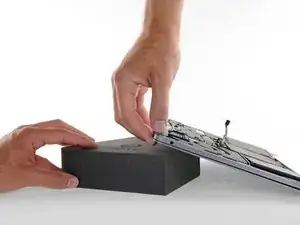
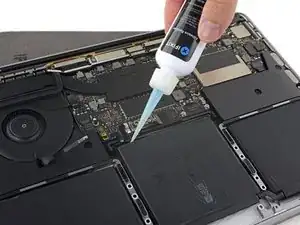
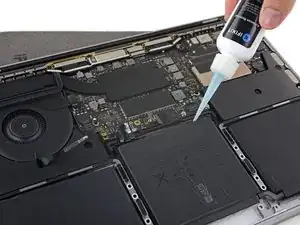
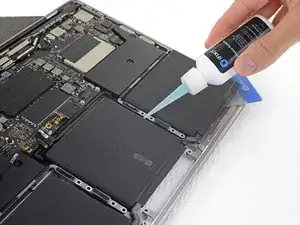
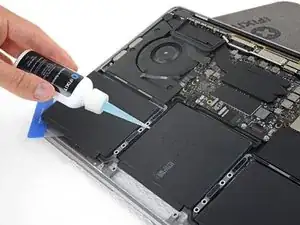
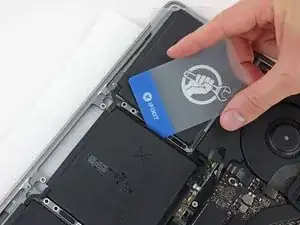
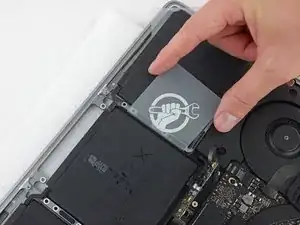
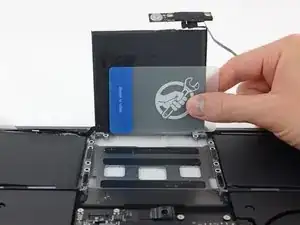
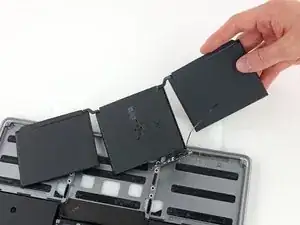
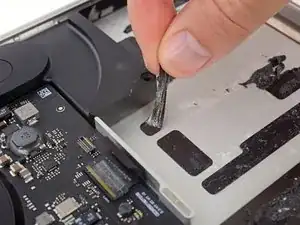

Is this step necessary? I can’t perform this step as I am attempting to repair water damage and need to remove logic board & most likely replace the battery.
Macrepair SF -
@mac_medic You definitely don’t want the power coming on while the board is wet. In your case, I think powering on the machine to disable Auto Boot would do more damage than it prevents. I agree, skip this step and be prepared to disconnect the battery quickly if the laptop automatically powers on. Good luck!
Jeff Suovanen -
Thats right! You don't want power running while working on your logic board.
Dan -
This did not work when running High Sierra.
Kyle B -
Tried this on a 2018 MBP 13” Touchbar (there’s no iFixit guide for this model yet). Need to replace a broken screen.
Luckily I managed to connect to an external screen (Cmd-Down Brightness to switch displays) and enter above command. Seems to work, but there’s another problem with this model - it powers up as soon as any key is pressed……. ffs <gnashes teeth>
Cool_Breeze -
I unscrew the battery first and wrap electrical tape over the logic board battery connector before attempting any repairs to the board. Haven’t had any problems yet and I’ve worked on about 10 of these models already. Also when you open the bottom case use a suction cup at the bottom and pull up then run a plastic spudger along the edges to disconnect the clips. Also only use a plastic spudger on the board. Saw a youtube video from a repair shop and he did not disconnect the power and used all metal tools during the entire process of removing the board. His last step was to disconnect the battery terminal.
Brian -
Is this step necessary if my mac can turn on? Battery fully dead(
Nursat b -
BEFORE YOU START: The included torx head stripped off before I was done (and you might need an additional T4) so stop now and go buy a good one. Also they fail to warn you above to get some blue threadlocker ahead of time.
Jason Sherron -
This command did not work for me and I read that sometime in later 2020 Apple stopped this command from working…any ideas on a work around?
Patrick Machacek -
Not able to do that with damaged screen
richardjgreen -
If you have a damaged screen you can still use a converter from thunderbolt (USB 3) to HDMI and plug your Macbook Pro to your TV as monitor display. Just make sure to chose the right Source (HDMI IN) in your TV. I did it and to make it work I unplug and plug again in my Macbook and so I could disable the Auto boot
Roberto Sanchez Bustos -
Hi. This does not work on 2018 13” MacBook Pro with Touch Bar. I did exactly this to disable auto boot. But when I check by using nvram -p it says: auto-boot true. Am I doing something incorrectly? I did everything step by step. Copied and pasted the sudo command, pressed enter and then entered my password. I have Big Sur 11.1 installed. Is there any other way since I need to replace the screen. Thank you. Adrian
Adrian Vizik -
Hi everyone. This is also a little pointless if you can’t see anything on the screen, and you don’t have a display adapter to USB C to display it. I agree with Brian about removing the back and disconnecting the battery cable before you even think about opening the lid of the MacBook. Applying the insulation tape is also a handy little tip that just makes sure there is no way to discharge from either the board or battery.
Roberto Enrieu -
running `nvram -p | grep 'AutoBoot'` in terminal verifies that it was accepted
result: `AutoBoot %00`
Marek Polák -
Running Big Sur 11.6.7 on a 2019 16" MBP, it's "auto-boot". So it's:
nvram -p | grep 'auto-boot'to display the current state, the default istrue- and then to change it,sudo nvram auto-boot=falsewhich turns it off.Ed Mechem -
This step is completely unnecessary if you follow the guide to disconnect the battery properly. Just put some tape between the battery and logic board connection to prevent it from accidentally touching and therefore powering on the laptop.
Grant Ormsby -
It took me a few tries to make this command work, as I was able to copy and paste the command into Terminal, but could not type in my laptop’s password. I finally typed my password into a text document, copied it (command C), and then pasted it into Terminal and it worked.
tommy404 -
I didn’t do this. Mine never auto-booted before I replaced the battery. Now it does.
hatuxka -
BEFORE YOU DO ANYTHING - CHECK THE BATTERY!
I-fixit sent me a bad battery, which I didn’t realize until it was already install. They sent me a new one, but I wasted hours uninstalling and reinstalled.
Get a volt meter and measure the voltage on the output of the battery pack. If it reads 0 V, SEND IT BACK. It should read over 2 V.
bcardanha -
When I did this from Terminal.app within Recovery Mode, the “sudo” was not recognized but I could invoke it without the sudo part. It seems to have been accepted when looking at “nvram -p”
johann beda -
When in Recovery Mode, you already have superuser powers. So you don't need to prefix commands with the sudo command to invoke them with root privileges; you already have them. Do a
pwd(print working directory) after opening Terminal in Recovery Mode, and you'll see that you're in the root user's directory.Ed Mechem -
I received the battery kit for my 2018 MacBook Pro and as per the above comment from bcardanha - Oct 12, 2021, I checked the voltage on the pads marked + and - . It was zero volts so I panicked a bit.
I sent a message on the iFixiT Facebook page and I got no reply. I finally found the customer service email for Ifixit Europe and sent them an email voicing my concern as I was not keen to work for couple of hours just to discover that the battery is faulty. I had an almost instant reply on the email (kudos to them) and they adviced me to go ahead and install the new battery as the voltage measured when battery is not connected is not relevant.
I took a leap of faith and after two hours… the new battery showed 50% charge and everything seems to be working just fine. I am happy it worked.
Mircea Comanici -
After removing the old battery and installing the new battery I powered up the MBP before screwing the bottom on. I discovered the my keyboard would not function. It took a few hours of investigation and frustration that I discovered the track pad power ribbon had become partially dislodged from the trackpad. I was able to see that this through the little machined slot where the battery sat. I had to remove the trackpad to reinsert the power ribbon back into the connector in the trackpad. after reassembling and reinstalling the battery etc the keyboard worked. Just food for thought if your run into the keyboard issue.
Ed Mease -
This should be the default. IMO I tell you to power on - not the lid.
G Sena -
Est ce que cela fonctionne sur un macbook pro 2017 sans touchbar ?
maël muzelet -
Bonjour Maël, oui, ce tutoriel concerne "les MacBook Pro 2016 (et plus récents) et les MacBook Retina 12" 2017 (et plus récents)"
Claire Miesch -
Excellent instructions. I was able to follow and install the new screen. I recommend that you get a good set of tools before you begin. I started with an inexpensive repair kit bought online. The Penta and torx bits failed. I bought an IFIXIT kit with quality bits and I was able to do everything I needed.
Tom Markham -
If you're not running an admin account the sudo command won't work (which honestly, you should not be running admin). Rather than logging in to your admin amount via the OS, in the terminal type "login [admin username]," then the password and you'll be able to do the sudo command as described above. Once you're complete, type "logout [admin username]" and you'll be good to go. Obviously replace [admin username] with whatever the account name for your admin user is.
arichard2401 -